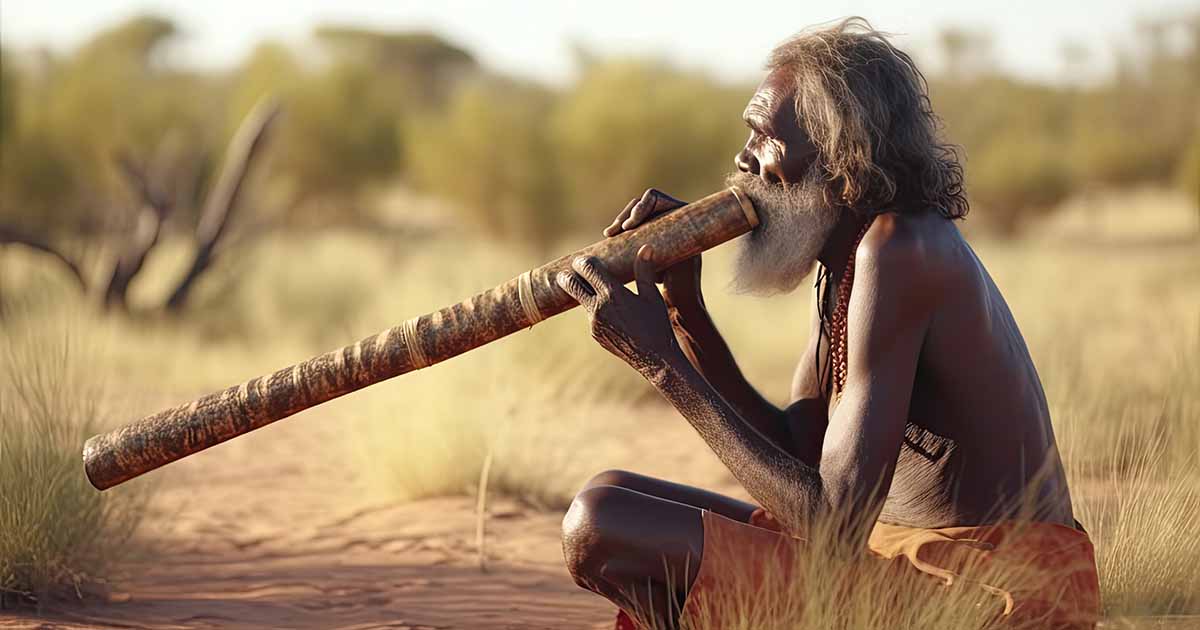The Aboriginal Didgeridoo Was a Tool for Healing and Peace
Never has it been more important to search for clues to finding healing and peace in the world. With that in mind, it appears that within ancient Aboriginal societies the didgeridoo is believed to have been central element in communal rituals aimed at resolving conflicts and fostering unity.
Historians consider the didgeridoo among the world's oldest wind instruments, though its true origins are shrouded in mystery. The Kakadu tribe in the Northern Territory is believed to have used it ceremonially for 1,500 years, while some suggest its use dates back 40,000 years, explained The Guardian. The first recorded instances in Aboriginal rock art emerge around 1,500 years ago.
While the name didgeridoo has an Australian ring to it, at least to foreign ears, it is actually a colonial construction, not native to Aboriginal languages. Its elusive etymology is believed to be rooted in onomatopoeia as colonists attempted to replicate Aboriginal words. Aboriginal words used for the instrument include ngarrriralkpwina, yidaki and mako, each unique to different tribes and their distinctive instrument styles.
Crafting the Hypnotic Sounds of the Didgeridoo
The ancient didgeridoo was and is crafted from the hollowed branches or trunks of eucalyptus trees. The process of creating the perfect specimens is complex. According to the musicologist Alice Moyle, these trunks have been hollowed out by termites who consume the heartwood of the host tree and then make a nest within using the digested wood fiber. The result is that certain trees are deemed adequate for creating the final instrument.
- Ancient Indigenous Practices of Australia Kept Nature in Harmony
- Tracing Songlines: Unraveling Aboriginal Australia's Ancient Oral Maps

Representational image of a man playing a didgeridoo. (A4 / Adobe Stock)
The didgeridoo produces a deep, resonant drone, characterized by a rhythmic, pulsating hum. Its unique sound, often described as hypnotic, was used by skilled musicians to create an atmosphere of harmony.
These musical rituals were not merely performances but profound expressions of connection to the Dreamtime. The vibrations of the didgeridoo were believed to carry messages to the spiritual realm, seeking guidance for conflict resolution and emphasizing the shared values of peace and cooperation within the community. Recent medical studies have found healing health benefits produced by playing the didgeridoo, from helping cases of sleep apnea to improving asthma management.
Debunking Common Didgeridoo Myths
Despite its rich cultural significance, the didgeridoo has been subject to various myths. In 1993 Madonna sparked controversy when she was spotted handling a didgeridoo. This popularized the myth that women are forbidden from playing or even touching the instrument. Some even claimed that touching or playing it can lead to infertility. Nevertheless, tribal laws about correct usage vary between different groups, though women are usually restricted to the non-ceremonial realm.
Top image: Representational image of an aboriginal man playing a didgeridoo. Source: Mockup Station / Adobe Stock


















Comments
"The Aboriginal Didgeridoo Was a Tool for Healing and Peace."
I guess that means this article won't discuss the times a didgeridoo has been used as an impromptu weapon...